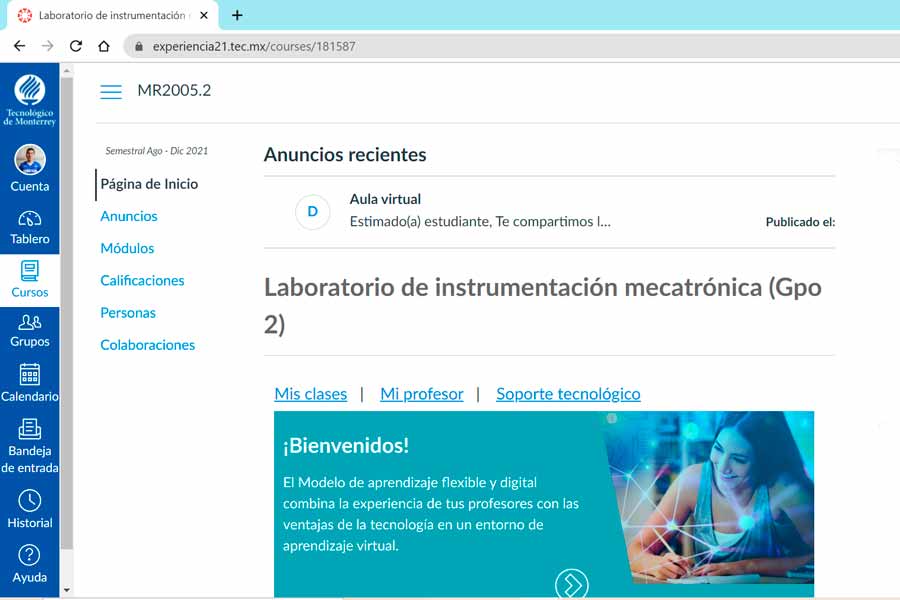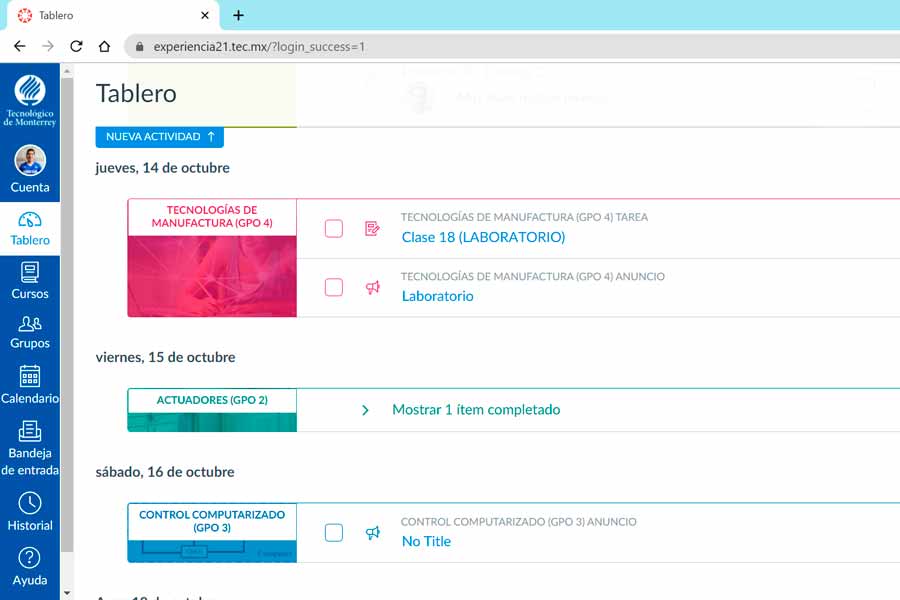Eduardo Cárdenas has become the first Mexican and one of only four Latin American teachers to receive the ‘Canvas Educator of the Year’ award.
The professor, who is also Director of the Department of Mechanical Engineering and Advanced Materials on Monterrey campus, was given the prize alongside professor Rocío González from the Polytechnic and Arts University of Paraguay and two Brazilian professors.
The winners were selected from among hundreds of teachers from different educational institutions around the world, 86 of whom were from Latin America.
This prize is given by Instructure, the educational technology company that created Canvas LMS, a learning management platform for hybrid and online education.

The award recognizes the creativity, commitment, and resourcefulness of teachers who use the platform. This year, a total of 14 awards were given to teachers from around the world.
“Teachers play an essential role in making things happen, being committed to the holistic learning of students through effective planning of each session.
“I used software (in class) for individual and collaborative selection of manufacturing processes and materials. I included lab-based experimental sessions and some good humor,” shared Cárdenas.
The integration of Canvas with the OneNote note-taking program to present and manage content on his Manufacturing Processes and Materials classes were innovations that led to the teacher receiving the award.
He also made use of Google tools to perform collaborative work with students studying for degrees in Mechanical Engineering and Administration, Electrical and Mechanical Engineering, Automotive Design Engineering, and Mechatronics Engineering.
Swapping chalk for technology
The exchange of ideas and student participation, both within and outside the virtual classroom, have been key to the pedagogical innovation the teacher has introduced in his classes.
For example, one activity that encourages the exchange of ideas is asking students to disassemble a product that no longer works at home.
Students must provide evidence of this through photos and videos in which they show the different components of the device and indicate the possible manufacturing process and material of each piece.
“This piques their curiosity, and as we progress through the course, they realize that there are simpler manufacturing processes that allow them to arrive at those pieces.
“Additionally, parameters such as geometry, texture, complexity of the piece, and the use of software to select materials and processes allow students reach more accurate conclusions”, he explained.
Professor Eduardo Cárdenas has been teaching at Tec de Monterrey for 30 years, and was responsible for guiding Canvas platform training for 60 School of Engineering and Sciences teachers, which has impacted 250 student groups.
Cutting-edge teaching
“I started using Canvas in 2019, and we began the migration to the virtual environment as a result of the pandemic, which triggered an intense process of training,” explained the teacher.
“This was in addition to generating content and activities that were coordinated to adapt to the context,” he said.
He also promoted novel and motivational uses of technology with the aim of going beyond activities which could be undertaken in a traditional classroom.

At first, everyone wanted to continue teaching everything as if we were in the classroom, added the teacher, but observation and reflection on what was going on meant that the relevant adjustments could be made to ensure that students were participating and were active during the virtual sessions.
“The real challenge lies in transforming ‘virtual face-to-face’ sessions by increasing interaction, collaborative work, the exchange of ideas and, above all, ensuring that students are truly present,” he said.
With information from Ángel Solís.
You’ll definitely want to read:





